As parents, we strive to safeguard our children’s health and happiness. Sometimes, subtle signs in their movements or behaviors may signal underlying concerns. Pediatric movement disorders are conditions that affect a child's ability to control their movements, ranging from mild clumsiness to pronounced motor difficulties.
Early recognition is crucial to ensure timely diagnosis and treatment. This guide from New Jersey Pediatric Neuroscience Institute (NJPNI) explores how to recognize the signs of pediatric movement disorders, common conditions, diagnostic processes, and available expert care.
What Are the Early Signs of Pediatric Movement Disorders?
Pediatric movement disorders can manifest in various ways. Being aware of these early signs can help you act promptly:
- Muscle Stiffness: Persistent tension or tightness in your child’s muscles or difficulty relaxing their posture may indicate a movement disorder.
- Tremors: Unintentional shaking, especially during rest or voluntary movements, is a red flag.
- Involuntary Movements: Sudden, uncontrollable jerking, twisting, or repetitive motions can disrupt daily activities.
- Balance and Coordination Issues: Frequent stumbling, falling, or trouble with fine motor tasks warrants attention.
- Speech and Swallowing Difficulties: Some movement disorders can impair clear speech or safe swallowing.
Common Pediatric Movement Disorders
Understanding the specific conditions under the umbrella of pediatric movement disorders can help you seek appropriate care.
1. Spasticity
- Cause: Often results from brain damage during pregnancy or early childhood. May be associated with prematurity or stroke.
- Impact: Affects muscle control, posture, and coordination.
2. Dystonia
- Symptoms: Persistent muscle contractions cause abnormal postures or repetitive movements.
- Affected Areas: Can involve any body part, making daily activities challenging.
3. Tourette Syndrome
- Characteristics: Involves motor tics and involuntary vocalizations.
- Onset: Typically starts in childhood, with varying severity.
4. Ataxia
- Effect: Impairs coordination and balance.
- Causes: May stem from genetic factors or neurological conditions, making fine motor skills difficult.
5. Chorea
- Effect: Impairs coordination.
- Causes: May stem from genetic factors or neurological conditions, making fine motor skills difficult.
How Are Pediatric Movement Disorders Diagnosed?
If you suspect a movement disorder in your child, seeking professional guidance is crucial. The diagnostic process includes:
1. Medical History Review
- Discuss family history and developmental milestones with the doctor to gain a comprehensive understanding.
2. Physical Examination
- The physician assesses muscle tone, reflexes, and coordination to evaluate motor function.
3. Imaging and Tests
- Advanced tests like MRI scans or blood work may be conducted to confirm the diagnosis or rule out other conditions.
Navigating Pediatric Movement Disorders with NJPNI Specialists
The New Jersey Pediatric Neuroscience Institute (NJPNI) specializes in diagnosing and treating pediatric movement disorders. Here’s why NJPNI stands out:
- Comprehensive Care Team: Pediatric neurologists,physiatrists, neurosurgeons, physical therapists, and speech therapists collaborate to create tailored treatment plans.
- Advanced Techniques: Cutting-edge diagnostic tools and therapeutic strategies are employed to address each child’s unique needs.
Early Intervention Focus: Prompt treatment enhances outcomes and ensures optimal development for children.
Conclusion
Recognizing pediatric movement disorders early can make a world of difference in your child’s quality of life. By staying informed about the signs, seeking timely diagnosis, and relying on expert care from institutions like NJPNI, you can support your child’s journey toward better health and well-being.
The team at NJPNI is here to guide you every step of the way, offering compassionate care tailored to your child’s needs. Together, we can help your child achieve their full potential.


